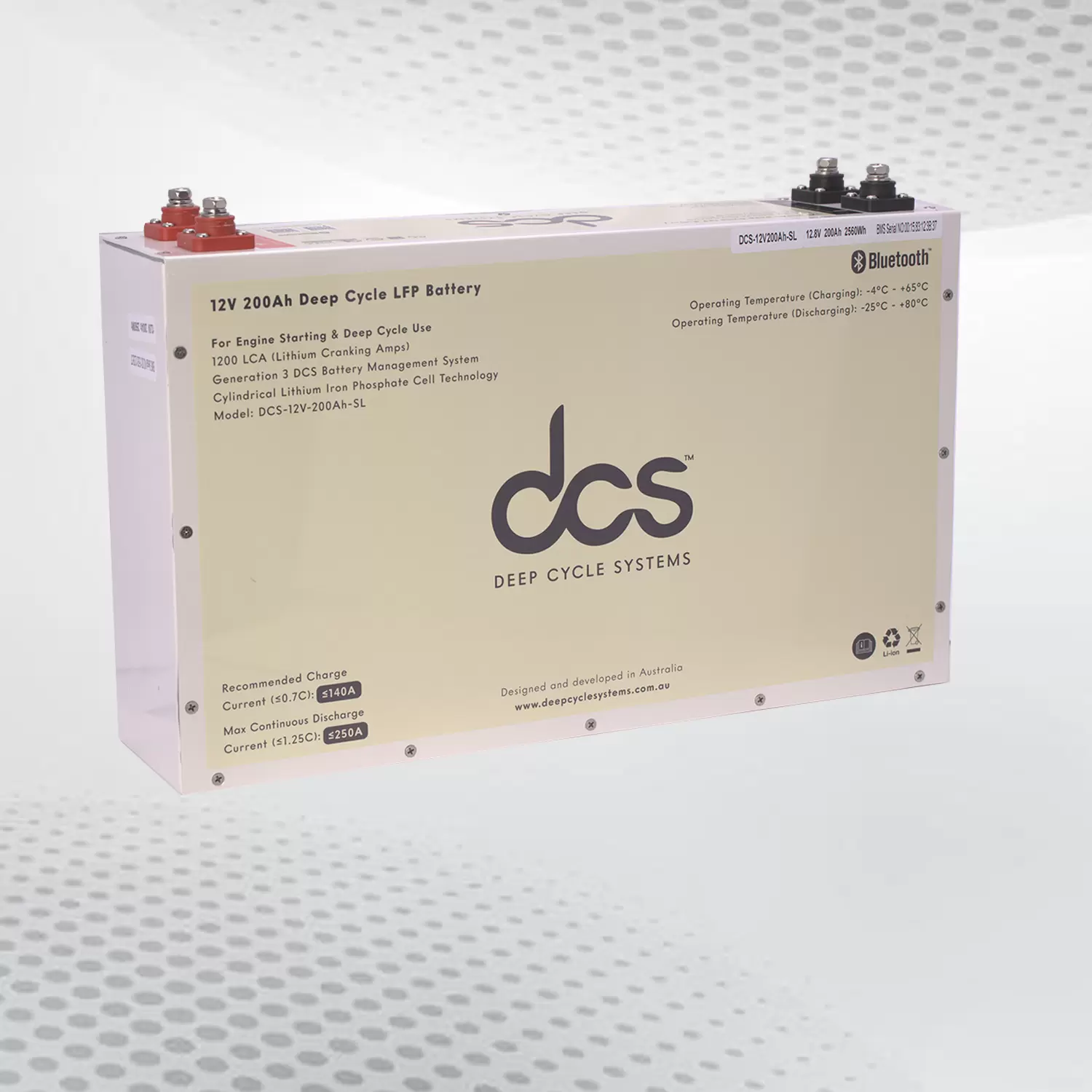In today’s technologically advanced world, the 12v Lithium Ion Batteryhas become an essential power source for various devices and applications. Its lightweight and compact design makes it popular for everything from portable electronics to larger energy storage systems. However, ensuring its longevity and safety requires proper charging and maintenance. This guide will explore these crucial steps to safely charge and maintain your 12V lithium-ion battery.
Understanding the Basics of a 12V Lithium-Ion Battery
A 12V lithium-ion battery consists of multiple cells, each typically generating 3.7 volts. These cells are linked in series to produce the 12V output. The battery’s chemistry enables a high energy density, delivering more power in a smaller and lighter form than traditional lead-acid batteries. Familiarity with these fundamentals underscores adhering to proper charging and maintenance protocols.
Recognising that lithium-ion technology has specific characteristics, such as a limited number of charge cycles, will help you manage your battery’s performance more effectively. Knowing that these batteries have built-in safety features, such as thermal management systems, is crucial, but knowing how to handle them is equally important. Your approach to charging and maintaining the battery can significantly influence its lifespan and efficiency, allowing you to maximise your investment.
Importance of Using the Right Charger
Using the correct charger designed specifically for your 12V lithium-ion battery is vital for safety and performance. Such chargers regulate voltage and current, preventing overcharging and the associated risks of overheating or explosions. Always match the charger’s voltage and current output with your battery’s specifications to ensure optimal functionality.
The importance of using a reputable brand cannot be overstated, as low-quality chargers may not provide accurate voltage readings or adequate safety features. Investing in a charger that adheres to industry standards ensures a smoother and safer charging experience. Always consult the battery’s manual or manufacturer’s guidelines to select the right charger. A properly designed charger will not only prolong the life of your battery but will also enhance its overall performance.
Charging Best Practices
To maximise the lifespan of your 12V lithium-ion battery, charge it in a well-ventilated area to dissipate heat. Avoid charging in extreme temperatures, which can affect the battery’s performance. Disconnect the battery once it’s fully charged to prevent overcharging. Regularly charging your battery rather than allowing it to fully discharge will also help maintain its health.
A smart charger automatically cuts off power when the battery reaches full charge, which is a wise choice. This feature prevents overcharging, which can significantly reduce the battery’s lifespan and compromise safety. Monitoring the battery’s temperature during charging is another good practice. If the battery feels excessively hot, it’s advisable to stop the charging process immediately.
Monitoring the Battery during Charging
While charging, regularly check for any signs of overheating, unusual noises, or swelling, as these can indicate potential issues. Many modern chargers feature LED indicators or digital displays to show the charging status, which can assist in monitoring the process. Ensure the charging area is well-ventilated to help dissipate heat and maintain a safe environment.
If you notice any anomalies during the charging process, such as rapid temperature increases or swelling, disconnect the battery immediately and inspect it for possible damage. Overheating can lead to serious issues, including thermal runaway, which can be catastrophic. It’s also essential to avoid covering the battery or charger with objects that may trap heat. Keeping the area around the charger clear of obstructions promotes better airflow and cooling, supporting safe charging conditions.
How to Store Your Battery Safely
Keep your 12V lithium-ion battery in a cool, dry place away from direct sunlight or heat when storing its sources. Ideally, store it at a 50% charge to minimise self-discharge and preserve its lifespan. Periodically check the charge level every few months and top it up as needed. Ensure the storage area is free from moisture and contaminants to prevent damage.
It’s essential to avoid leaving your battery in extreme conditions, whether too hot or too cold, as these can affect its chemical composition and overall performance. The ideal temperature range for storage is generally between 32°F (0°C) and 77°F (25°C). If you live in an area with fluctuating temperatures, consider using insulated storage containers to help maintain a stable environment for your battery.
Periodic Maintenance Checks
Regularly inspect your 12V lithium-ion battery for physical damage, corrosion on terminals, or loose connections. Clean any debris and ensure all connections are secure. Check for any signs of swelling or leakage, which could indicate internal issues. Use a multimeter to verify the battery’s voltage and ensure it remains within the recommended range. Regular maintenance helps identify potential problems before they escalate, ensuring safe and efficient operation.
Make it a habit to schedule these inspections every three to six months, depending on your usage. More frequent checks may be warranted if the battery is subjected to frequent charging and discharging. Pay special attention to the battery terminals, as corrosion can significantly impact conductivity. If you notice any corrosion, clean the terminals with a mixture of baking soda and water, using a soft brush to scrub gently.
Handling Slim Line Lithium Batteries
Slim-line lithium batteries offer a compact and lightweight solution for space-constrained applications. Avoid dropping or applying excessive force that could damage the slender structure when handling these batteries. Secure the battery to prevent movement during operation, which could lead to wear or connection issues. Ensure the installation area is clean and dry to maintain optimal performance.
Always follow the manufacturer’s guidelines when installing slim-line lithium batteries to ensure a proper fit and functionality. The design of these batteries often requires specific mounting techniques or enclosures to secure them safely. Additionally, due to their lightweight nature, it’s essential to be cautious about their placement to avoid unintentional displacement.
Understanding Slim Line Lithium Battery
Slim-line lithium batteries are designed to provide high energy density in a compact and lightweight form, making them ideal for limited-space applications. These batteries maintain the same voltage output and efficiency as standard lithium-ion batteries but with a thinner profile. This slim design allows versatile installation options in various devices and systems, from portable electronics to specialised equipment. When selecting a Slim Line Lithium Battery, consider your application’s specific energy and power requirements to ensure optimal performance and compatibility.
When selecting a slim-line lithium battery, consider your application’s specific energy and power requirements to ensure optimal performance and compatibility. These batteries’ compactness does not compromise their performance, making them a great choice for electric bikes, drones, and other high-tech equipment requiring efficient power solutions.
Common Mistakes to Avoid
Using an incompatible charger can harm your battery, so always ensure your charger matches the battery’s specifications. Avoid exposing the battery to extreme temperatures, as this can negatively impact performance and safety. Allowing the battery to discharge completely before recharging can shorten its lifespan. Be mindful of physical damage and improper storage, which can lead to safety hazards.
It’s crucial to read and understand the manufacturer’s battery and charger guidelines. Many users assume that all lithium-ion chargers are interchangeable, resulting in overvoltage or under-voltage scenarios. These conditions can damage the battery or even create hazardous situations.
Troubleshooting Common Issues
If your 12V lithium-ion battery isn’t holding a charge or is exhibiting unusual behaviour, start by examining the battery for loose connections or signs of corrosion. Ensure that the charger is functioning correctly and that it’s compatible with your battery. Inspect the battery for any physical damage or swelling, which could indicate internal problems. If the battery still fails to operate normally, refer to the manufacturer’s troubleshooting guide or consult a technician to prevent further complications.
If you notice that the battery is discharging rapidly, it could indicate a malfunctioning charger or an issue with the battery itself. Test the voltage using a multimeter to confirm that the charger provides the correct output. Consider a replacement if the voltage is within range but the battery fails to charge properly.
Safety Precautions and Tips for 200ah Lithium Battery Slimline
Handling a 200 Ah lithium battery slimline is crucial for safety and performance. Following these essential guidelines will help prevent accidents and ensure the battery’s longevity.
Use Protective Gear
Always wear gloves and safety glasses when handling the battery. This protective equipment minimises the risk of injury from accidental spills or electric shocks.
Secure the Battery
Ensure the battery is securely fastened to avoid any movement or vibrations during operation. Unstable placement can lead to connection issues or potential damage to the battery.
Charge Correctly
Use a charger specifically designed for high-capacity batteries. The right charger ensures efficient charging and prolongs the battery’s life.
Store Safely
Keep the battery away from flammable materials and store it in a well-ventilated area. Proper storage minimises fire hazards and supports safe operation.
Regular Inspections
Conduct routine checks for any signs of wear or damage. Early detection of issues can prevent further complications.
Consult Professionals
Never attempt to repair a damaged battery yourself. If you observe any abnormalities, consult a professional technician immediately to ensure safety and proper handling.
Following these guidelines, you can safely manage your 200Ah lithium battery slimline and maintain its optimal performance.
Extending the Lifespan of Your Battery
Proper care and maintenance of your 12V lithium-ion battery are crucial for extending its lifespan and ensuring optimal performance. Here are some essential tips to help you achieve this:
- Temperature Control: Keep the battery away from extreme temperatures. Ideal storage conditions are in a cool, dry place.
- Regular Inspections: Periodically check for any signs of wear or damage, including cracks or swelling, to catch issues early.
- Recharge Practices: Avoid completely discharging the battery before recharging. Frequent shallow discharges can help prolong battery life.
- Gentle Handling: Always handle the battery carefully to prevent physical shocks, which can damage internal components.
- Ventilation: Use the battery in well-ventilated environments to prevent overheating and maintain performance.
- Storage Considerations: If storing the battery for an extended period, charge it to about 50% to keep it in good condition.
By implementing these practices, you can enhance the longevity and reliability of your 12V lithium-ion battery, ensuring it remains efficient for your needs over time.
Conclusion
Safely charging and maintaining your 12V lithium-ion battery is essential for optimal performance and longevity. Understanding the fundamentals, using the right charger, following best practices during charging, and conducting regular maintenance checks can significantly enhance the battery’s lifespan and reliability. Proper storage and handling are equally important to prevent damage and ensure safety. Adopting these guidelines will improve your battery’s efficiency and reduce the risk of potential hazards, allowing you to enjoy the benefits of your 12v Lithium Ion Battery for years to come.
FAQs
How often should I charge my 12V lithium-ion battery?
It’s best to charge your battery regularly rather than letting it fully discharge. Charging it when it reaches around 20-30% capacity helps maintain its health and extends its lifespan.
What type of charger should I use for my lithium-ion battery?
Always use a charger specifically designed for lithium-ion batteries. Ensure it matches your battery’s voltage and current specifications to prevent overcharging or damaging it.
Can I store my battery in extreme temperatures?
Extreme temperatures can adversely affect your battery’s performance and safety. Store your 12V lithium-ion battery in a cool, dry place away from direct sunlight and heat sources.
What signs indicate my battery may need replacement?
Look for signs such as swelling, leakage, inability to hold a charge, or physical damage. If you notice any of these symptoms, you should stop using the battery and consult a professional.
How can I maximise the lifespan of my 12v Lithium Ion Battery?
To maximise lifespan of 12v Lithium Ion Battery, avoid complete discharges, keep the battery in moderate temperatures, and perform regular maintenance checks. Using the battery within its recommended specifications will also help ensure its longevity.




